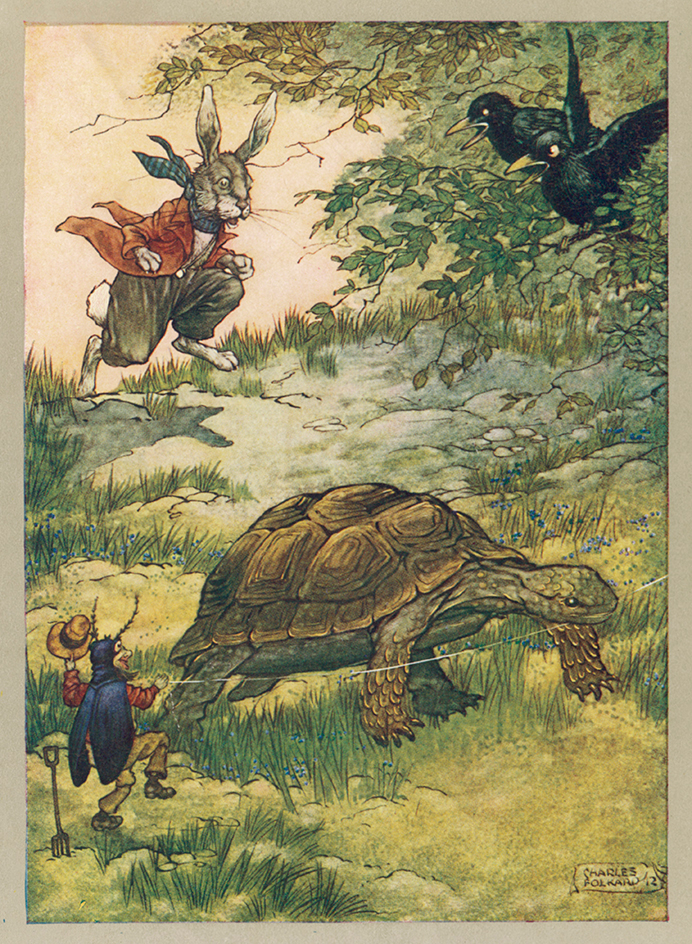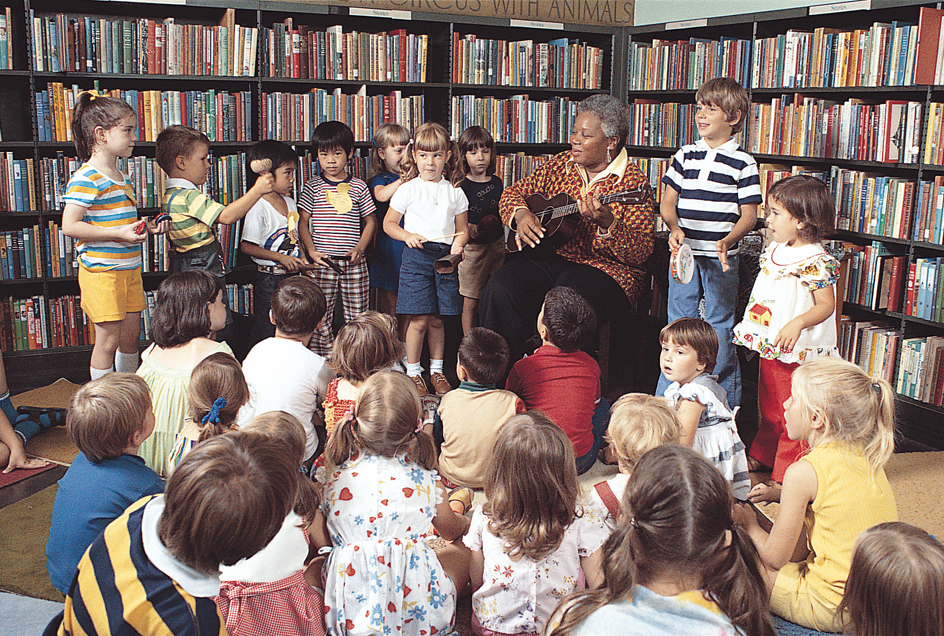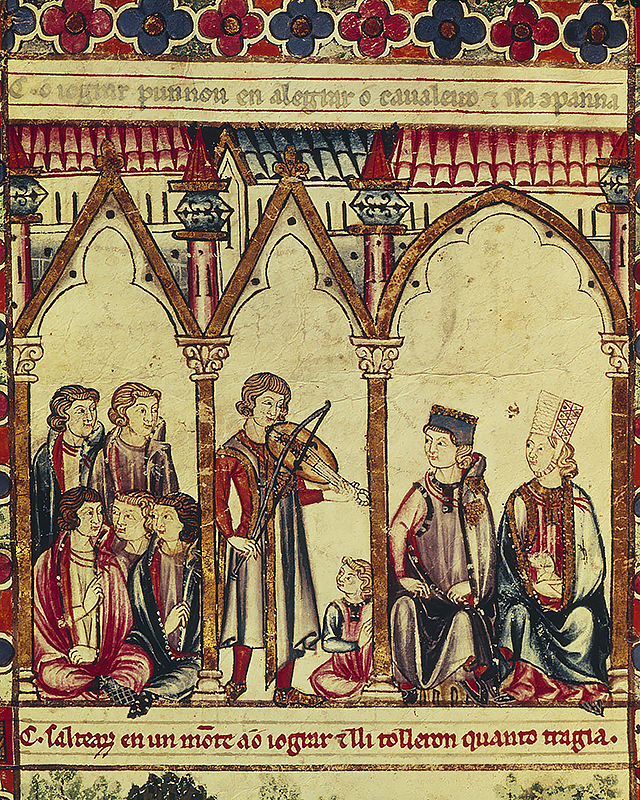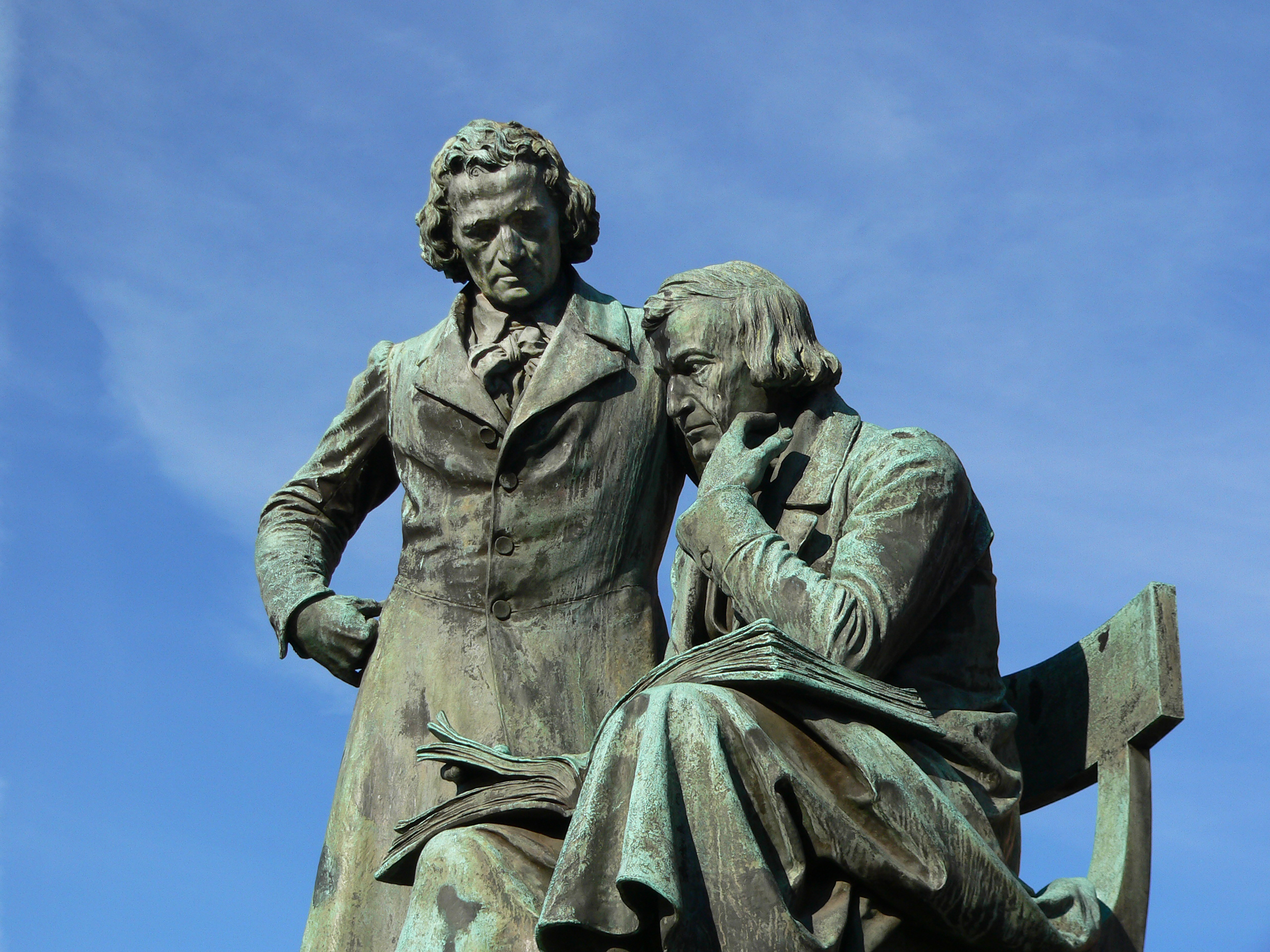Storytelling is the art and craft of telling stories orally. Storytelling is an ancient tradition, developed long before written language, which connects generations, cultures, and societies. In storytelling, a person prepares a story to present to an audience. Although some storytellers tell stories from their own imagination, most storytellers learn a story that appears in a book.

Storytelling provides great benefits for listeners. Hearing a story can expand creativity, and create a sense of community and a feeling of connection with history. In libraries and classrooms, storytelling is used to motivate children to read, to improve listening and writing skills, and to introduce young people to good literature. Storytelling sources include folklore, primarily folk tales, myths, epics, legends, and fables. Literary tales also provide material for stories.
Kinds of stories for telling
Folk tales
are stories that have been handed down from generation to generation either in writing or by word of mouth. Folk tales are simple stories that concentrate almost entirely on plot. Because they are short and simple, these tales are perfect for storytelling. Many collections of folk tales from around the world have been rewritten and edited especially for the storyteller.
Myths, epics, and legends
are closely related to folk tales. Myths are stories that attempt to describe the nature of the world and human existence. Greek, Roman, and Norse myths are the most familiar to Western audiences, and are the kind most often told by storytellers. An epic is a body of stories that concern a hero, such as Robin Hood or King Arthur. Legends usually relate some aspect of the history of a culture. Stories describing the building of railroads in the United States or the adventures of bushrangers (outlaws) in Australia often take the form of legends.

Fables
are short tales that attempt to teach a lesson or convey a moral. Many of the characters are animals who act like human beings. The Greek stories of Aesop and the French tales of Jean de la Fontaine are probably the best-known fables, but African, Asian, Russian, and other fable collections include colorful tales as well.

Literary tales
are stories created by an author but written in the style of a folk tale. Most literary tales contain more descriptive passages than folk tales, and the characters are more fully developed. Because the literary tale is more complex, it is usually told by an advanced storyteller.
Urban legends
are modern fictional stories passed from one person to another as truth, even though few actually happened. Most of these tales are funny or shocking and have unexpected endings that are highly improbable. In place of evidence, the storyteller relies upon the word of a supposedly trustworthy friend. These stories are often referred to as “friend of a friend” stories. The term urban legend entered the popular vocabulary with the publication of The Vanishing Hitchhiker: American Urban Legends and Their Meanings (1981) by Jan Harold Brunvand.
How to tell a story
Selecting a story
is the first step in the storyteller’s preparation. The best place to find a good story is in books on the art of storytelling. These books contain discussions of sources, hints for learning and telling stories, and story collections ready to tell.

The type of audience determines what kind of story the storyteller will choose. It is important to adjust the story’s length and complexity to the age of the audience. The storyteller can tell short folk tales to young children. School-age children are ready for longer stories. However, for first-, second-, and third-graders, the plots should be simple with few characters. Older children and adults enjoy longer folk tales, myths, epics, historical legends, and urban legends.
Learning the story
is the next step for the storyteller. First, read the story over several times and try to organize the order of events and the characters in your mind. Then, tell the story to yourself or to a willing listener. You will find that you have memorized a key phrase or two and possibly some sentences at the beginning and end of the story. After you have learned the story well enough that you no longer have to look at the book, you can begin to refine your technique.
Most professional tellers agree that it is not necessary to memorize every word in a story. However, you should memorize a literary tale if the style of writing is important.
Telling the story
should be easy for anyone who prepares properly. The words should tell the story. You do not need to mime or act. If you are “seeing” the characters and scenes in your mind, the audience will see them as well. As the storyteller, you will have to decide when to expand your description so that your audience will better appreciate your story.
History
The earliest storytelling
probably consisted of simple chants that praised the dawn or the stars, or expressed the joy of being alive. People sang other chants to accompany some task, such as grinding corn or sharpening tools or weapons.
As people began to wonder about the world around them, they created myths to explain natural occurrences. They assigned superhuman qualities to ordinary people, thus originating the hero tale.
Early storytelling combined stories, poetry, music, and dance. Many people told stories, but the best storytellers became entertainers for the community. These people also became historians for the group, marking the beginning of professional storytelling.
The Middle Ages,
from about the A.D. 400’s through the 1500’s, saw the flowering of the storyteller’s art. Storytellers were welcome in royal courts as well as in marketplaces. Traveling storytellers journeyed from land to land, gathering news and learning the favorite stories of various regions. Storytellers exchanged stories so often that it became difficult to trace the origin of many of their tales.

The storytellers of the Middle Ages had thorough training. Ruth Sawyer, a noted American storyteller and author of children’s books, described the training of a troubadour, who was a medieval poet-musician. She wrote that a good troubadour was expected “to know perfectly all the current tales, to repeat all the noteworthy theses from the universities, to be well informed on court scandal, to know the healing power of herbs and simples (medicines), to be able to compose verses to a lord or lady at a moment’s notice, and to play on at least two of the instruments then in favor at court.”
No one knows how many storytellers entertained during the Middle Ages. Some writings say 426 minstrels were employed at the wedding of Princess Margaret of England in 1290. The many minstrels in the court of King Edward I included two women who performed under the names of Matill Makejoye and Pearl in the Egg.
After the invention of movable type in Europe about 1440, reading replaced listening, and the influence of the professional storyteller faded. Inexpensive pamphlets of popular tales known as chapbooks provided entertainment and also preserved some of the earliest stories. Oral storytelling survived mainly in rural areas.
The 1800’s
were a time of growing scholarly interest in folk literature. In 1812 and 1815, the brothers Jakob and Wilhelm Grimm published collections of German tales that became probably the best-known works of their kind. The brothers gathered their stories from the common people and faithfully preserved the unique structure and language pattern of the tales. See Grimm. 
Peter Asbjornsen and Jorgen Moe followed the example of the Grimms and collected Norwegian folk tales (see Asbjornsen, Peter Christen ). The Fairy Tales of Hans Christian Andersen of Denmark appeared in England in 1846. Many of his stories were his own adaptations of folk tales he had heard from storytellers. However, Andersen also added his own literary tales. In England, Joseph Jacobs searched folklore journals for tales of England, Scotland, Wales, and Ireland and rewrote them for children. The Folklore Society, founded in London in 1878, was devoted to the study of traditional culture, including stories.
The 1900’s
were a period when storytelling continued to flourish. During the early 1900’s, Marie Shedlock, a retired English schoolteacher and gifted storyteller, made several tours throughout the United States to lecture on the art of storytelling. She emphasized the importance of storytelling as a natural way to introduce literature to children. Her work encouraged organized storytelling that had already begun in Sunday schools, kindergartens, and libraries throughout the United States. In 1903, a group of schoolteachers formed what is now the National Story League, a volunteer organization to promote the art of storytelling.
In 1973, the first National Storytelling Festival was held in Jonesborough, Tennessee. The success of the festival led to the founding of the National Association for the Preservation and Perpetuation of Storytelling, later the National Storytelling Association (NSA). In 1998, the NSA divided into two organizations, the National Storytelling Network and the International Storytelling Center. These groups and such organizations as the Australian Storytelling Guild in Australia and the Society for Storytelling in the United Kingdom provide resources and training for storytellers throughout the world. Regional, national, and international storytelling festivals inspire new types of stories.
The 2000’s.
The Internet has connected storytellers in the 2000’s. There are numerous websites devoted to storytelling and folklore research. There are also online discussion groups and home pages for individual storytellers and storytelling organizations.
Today’s storytellers are no longer limited primarily to traditional folklore. They also tell personal stories, autobiographical material, and original pieces.
